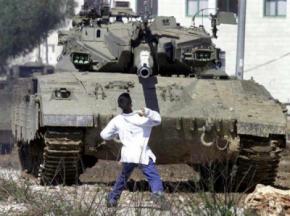Six Days of 1967: A War or an Aggression
Six-Day War 1967
“The spirit of Israel’s heroes accompanies us to battle . . . From Joshua Bin-Nun, King David, the Maccabees and the fighters of 1948 and 1956, we shall draw the strength and courage to strike the Egyptians who threaten our safety, our independence and our future. Fly, soar at the enemy, destroy him and scatter him throughout the desert so that Israel may live, secure in its land, for generations.”
With these words, on the morning of 5th June 1967, the Israeli Air Force Commander Motti Hod issued an order for the pre-emptive airstrikes on the Egyptian aircraft parked on an apron. The first wave of airstrikes was merely of half an hour but the single squadron had destroyed half of the Egyptian air force. This was first of the six days of war. It was the shortest war in history called ‘Six-Day War’ or ‘An-Naksa’ meaning ‘The Setback’.
The roots of violence in the region go back to the early decades of the twentieth century when the indigenous population of Palestine started protesting against the immigration of Jews into Palestine and the illegal usurpations of land by the settlers who claimed it to be a promised land. Settlements swelled and violence intensified with each wave of immigration.
After the constant unrest in the region, Britain -which was the mandate of Palestine- decided to hand the entire issue over to the United Nations. The organization passed the UN General Assembly Resolution 181 which resulted in the allotment of 56% of land to the Jewish immigrants or the illegal settlers and the rest 44% to the indigenous population, declaring Jerusalem as an international entity. It paved the path for the creation of a Jewish state called Israel in 1948.
1948 was also the year when the Catastrophe befell the Palestinians. The event is commemorated as Nakba Day on May 15th, when 7,50,000 indigenous population from around 400-600 villages were violently expelled. They took refuge in neighbouring Arab countries longing to return to their homeland. However, this violent expulsion of Palestinians has deliberately been termed as a mass exodus. Euphemism in recording such a crisis does not only reduce the ferocity of the violence but also the afflictions faced by the expatriates. Nevertheless, the violent episode changed the geopolitics of the region.
This blatant act of creating and expanding a racial apartheid state set the battlefield for the next several decades of brutal onslaughts, oppression, enactment of lethal policies, ethnic cleansing, military crackdowns, arbitrary detentions of Palestinians and various deadly Arab-Israeli wars, be it the 1956 Suez Canal Crisis which was tripartite aggression of Britain, France and Israel on Egypt or the 1967 Six-Day War which was a desperate attempt of Israel to expand its territories launching pre-emptive airstrikes on Egypt, Syria and Jordan.
In 1967, Egyptian President Gamal Abdel Nasser’s decision to close the Strait of Tiran and to order the UN Peacekeeping Force out of the Sinai Peninsula seeking to put pressure on Israel is often said to be the reasons that prompted the nascent state to take advance military actions against Egypt.
However, the recorded statements of some eminent personalities of the Israeli Defence Forces painted a different picture. Like the one from the Deputy Chief of General Staff Ezer Weizman who said:
“For five years I had been talking of this operation, explaining it, hatching it, dreaming of it, manufacturing it link by link, training men to carry it out. Now, in another quarter of an hour, we would know if it was only a dream, or whether it would come true.”
Another account from Egyptian commander Brig. Zaki shows that Egypt had no intention to go for a war with Israel. He said:
“Israel spent years preparing for this war, whereas we prepared for parades. The drills for the annual Revolution Day parade went on for weeks . . . but there were no preparations for war.”
In 1968 Yitzhak Rabin stated in a public interview “I don’t believe that Nasser wanted war… He knew it and we also knew it”
Israel after smashing the three defence forces in 1967 was able to capture the region of the Gaza Strip and the Sinai Peninsula from Egypt, Golan Heights from Syria and West Bank from Jordan annexing them into its settler's colonial state. The annexation escalated the refugee crisis in the Middle East.
Gaza Strip has been under the Israeli siege since then with almost no access to clean water, electricity and educational institutions making it the largest open-air prison in the world. The recent brutal military onslaught on the region again left the crucible with a massive stockpile of debris of multiple skyscrapers and more than 75,000 homeless refugees.
Israel has long been portraying its war crimes against humanity as the war on terror and the world had been prey to its narrative of self-defence. But this time a shift in opinion has been witnessed.
Despite egregious attempts of apartheid state to muzzle the voices and distort the Palestinian struggle, efforts are being made to showcase the agony of the Palestinian victims.
New York Times recently has published names and images of the 67 children who died in the brutal Israeli onslaught on the Gaza Strip. United Nation has called for a probe into Israeli war crimes against humanity and Palestinian human rights. And an anti-Israel bill has been proposed by Congresswomen AOC and Rashida Tlaib in US senate demanding an end to the US military funding of Israel. All of this is assumed as a milestone of the Palestinian struggle for freedom.
This article was written on 5th June 2021

Praiseworthy 👍🏻
ReplyDelete